Maintaining proper tire inflation is relatively simple and essential to the overall tire performance of your vehicle. A properly inflated tire will provide longer life, quicker steering response, better fuel efficiency and a smoother ride than an improperly inflated tire. Both underinflation and overinflation can cause headaches like premature treadwear and possible tire failure. The best way to ensure you're getting the most out of your tires is to check your tire pressure on a monthly basis.
Knowing how to use a tire pressure gauge is very simple. Here’s how to check tire pressure and refill your tires.
Items You Need When Checking Tire Pressure
Tire pressure gauge
Air compressor
Pen and paper
Your tire pressure gauge can be digital or standard. Auto parts stores typically carry both. Many auto parts stores sell portable air compressors that run from your car battery or 12v power port. Alternatively, you can use the air compressor found at most gas stations. They usually cost $0.50 or $1.00 to use.
Vehicle manufacturers specify PSI – literally “pounds per square inch” of pressure – assuming tires are cold. Tires are considered cold when the vehicle has been parked for three hours or more, or if the vehicle has been driven less than a mile (1.6 km) at moderate speed. PSI is the unit your pressure gauge uses to provide readings.
Look on the driver’s side door jamb or your owner’s manual to find the recommended cold tire PSI for your front and rear tires. If you cannot find it, you should consult your vehicle dealer, manufacturer, or a qualified tire professional.
If your front and rear tires require different pressure levels, write down the correct PSI for each to avoid getting confused as you move around your vehicle checking tire pressure.
Remove the valve cap from one of your tires. Then place the pressure gauge on the valve stem and press down hard enough so the hiss sound disappears and your gauge provides a reading. With a standard gauge, the air pressure will push a small bar out from the bottom of the gauge. Measurement units are etched into the bar. A digital gauge will show you the reading on a screen.
Write down the reading and repeat this process for all four tires.
Use an air compressor to refill any tires with low pressure. Many air compressors are different, so read directions carefully to be sure you’re using it correctly.
If you’re using the air compressor at a gas station, be sure to park so that the hose will reach all four tires. Insert change into the machine until you hear the motor running. Fill each tire by placing the end of the hose over the valve stem and pressing on the lever.
Using a gas station air compressor means your tires might be “hot.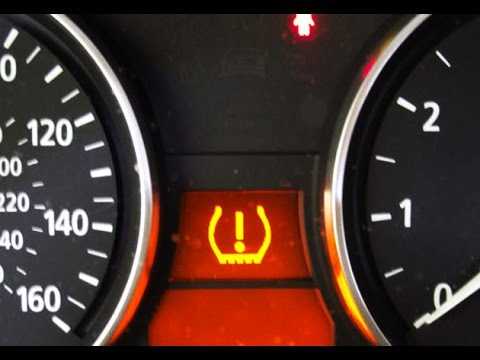 ” If it is necessary to adjust inflation pressure when tires are “hot”, set their pressure to 4 psi (14 kPa) above the recommended cold inflation pressure. Recheck the inflation pressure when the tires are cold.
” If it is necessary to adjust inflation pressure when tires are “hot”, set their pressure to 4 psi (14 kPa) above the recommended cold inflation pressure. Recheck the inflation pressure when the tires are cold.
After filling your tires, use the gauge to check pressure again. At this point, it’s ok if you overfilled the tires because you can always let some air back out. Never drive on overinflated tires. Overinflation can result in decreased traction, premature wear, and decreased impact absorption.
Make the above procedure a monthly ritual. Regularly checking your tire pressure is the best way to ensure your tires never dip far below the optimal PSI.
Accuracy matters and you should keep that in mind when choosing a gauge. For just a few dollars, you can find a quality, accurate tire pressure gauge that gives accurate readings. If you’re not sure which one to purchase, ask a professional technician which he or she prefers.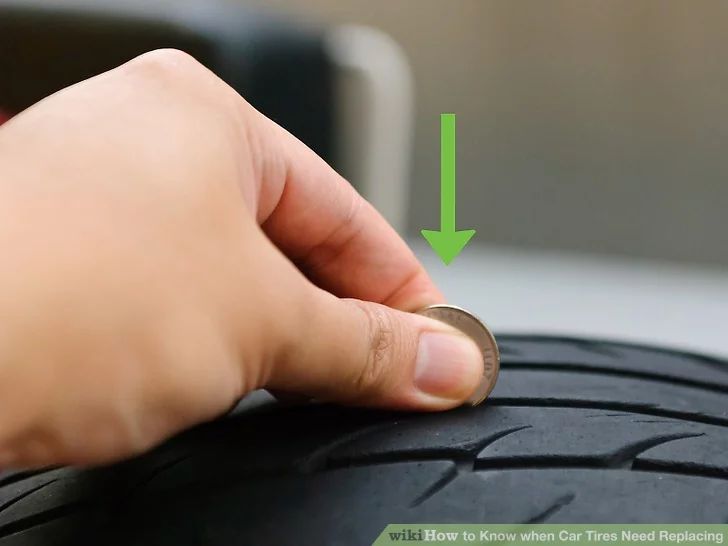
A digital tire pressure gauge will provide accurate readings, but don’t forget that it operates on a battery. If you think having to replace the battery will prevent you from using it, it’s best to go with a standard gauge.
It’s best to use your personal tire gauge versus those available attached to air hoses at service stations. Of all the pressure gauges out there, they’re the most likely to be weathered, and possibly inaccurate.
There’s never a good time for a flat. That’s why Bridgestone DriveGuard tires are masterfully engineered to keep you moving for up to 50 miles at speeds up to 50 MPH without disruption.
There’s never a good time for a flat. That’s why Bridgestone DriveGuard tires are masterfully engineered to keep you moving for up to 50 miles at speeds up to 50 MPH without disruption.
See Details Find Your Fit
From a safety and cost standpoint, tire maintenance is one of the most important things you can do for your car.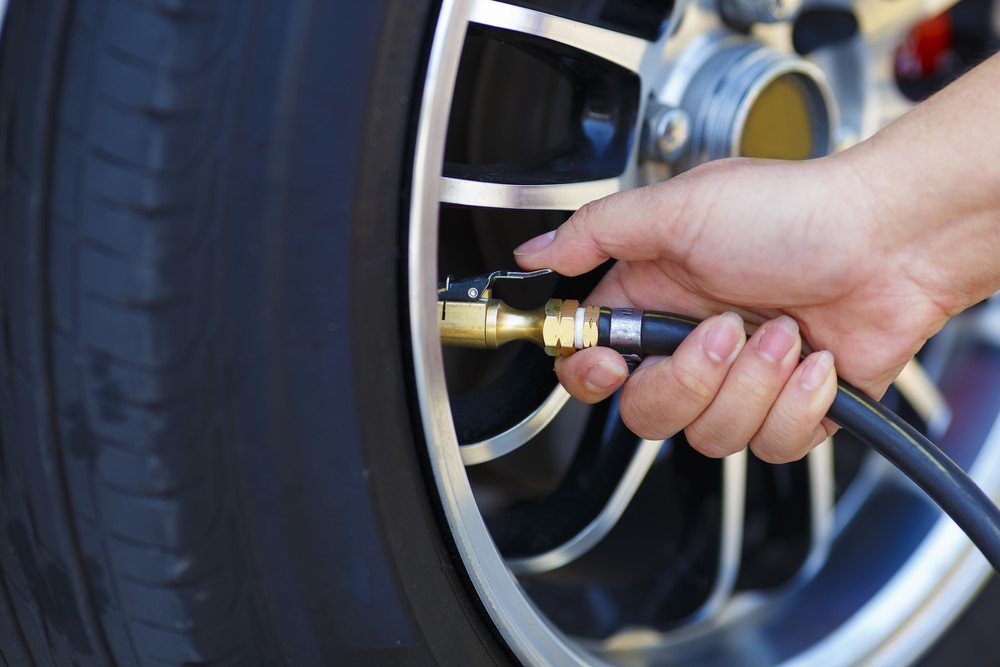 The easiest way to care for your tires is both quick and inexpensive: maintain the correct tire pressure.
The easiest way to care for your tires is both quick and inexpensive: maintain the correct tire pressure.
The recommended pressure for tires varies by the type of car and tire. Because maintaining your tires is so crucial to your safety and your car’s overall performance, it’s important to know what tire pressure is correct for your vehicle.
To learn what your tire pressure should be, look for your manufacturer’s recommendation, which is printed on a label inside your car. Depending on the vehicle, this label may be on the edge of the vehicle’s door, on the doorpost or in the glove box. The label will usually give recommendations for the front and rear tires as well as the spare, and it’s important that you stick to those guidelines. Even after you’ve replaced your tires, the same pressure guidelines on your car’s label apply to new tires of the same size.
Pressure recommendations are based on readings taken from a tire pressure gauge.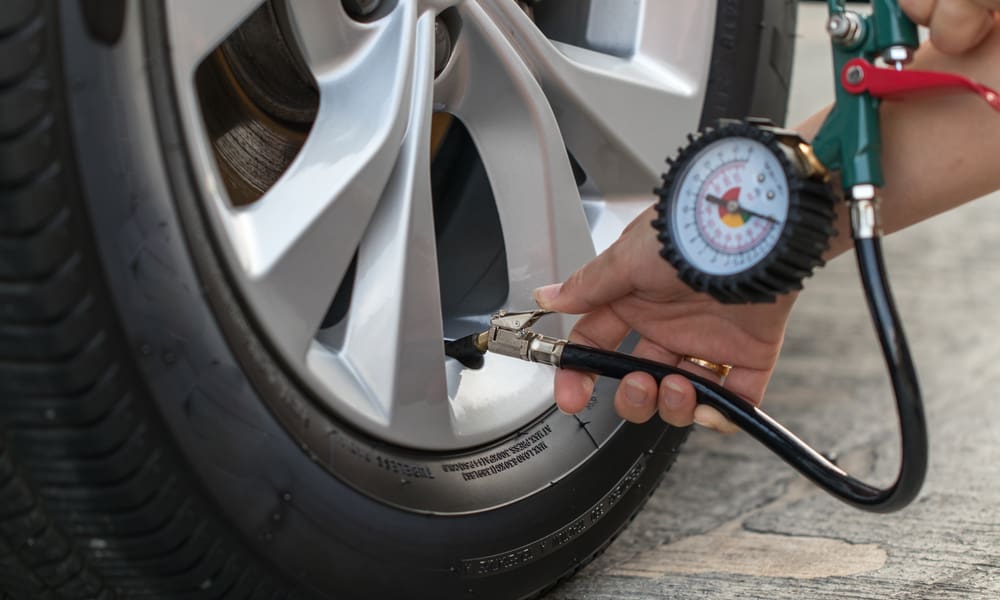 Check the pressure first thing in the morning or wait at least three hours after driving; this provides sufficient time for them to cool back down.1
Check the pressure first thing in the morning or wait at least three hours after driving; this provides sufficient time for them to cool back down.1
Driving on underinflated tires is one of the biggest causes of tire failure, according to the National Highway Traffic Safety Administration. And not having enough air in your tires can lead to other problems. Under-inflated tires wear out more rapidly, handle poorly and reduce fuel efficiency. On the other hand, overinflated tires are more susceptible to damage from road irregularities, and they also result in a bumpier ride. Overfilling your tires is just as dangerous as underfilling them, so it’s important you know what is recommended for your vehicle.
Knowing how to check tire pressure is critical to your safety and to keeping your tires in good working order.
When it comes to choosing a gauge, you typically have 3 options:
Put the pressure gauge into the valve stem, making sure the gauge is evenly and firmly pressed onto the stem.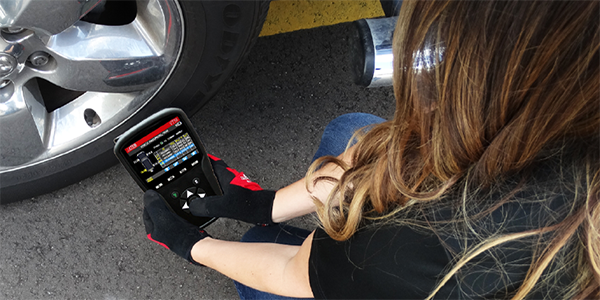 If you’re using a pen-style gauge, read the number on the rod that pops out of the sleeve. Read dial pressure gauges as you would a watch with one hand. With a digital pressure gauge, simply read the number on the screen. 2
If you’re using a pen-style gauge, read the number on the rod that pops out of the sleeve. Read dial pressure gauges as you would a watch with one hand. With a digital pressure gauge, simply read the number on the screen. 2
Find your tires’ recommended PSI in the owner’s manual or on a sticker just inside the driver’s side door. The proper PSI is crucial to your safety and the car’s longevity. Underinflated tires can overheat and wear unevenly; overinflated tires can blow out.1
Temperature has a direct effect on your air tires’ air pressure, so for an accurate PSI reading, make sure to check tire pressure when tires are cold. If it’s cold outside, then you can assume your tires are losing PSI and you should check even more frequently. This will help to ensure maximum safety. Take your car to a mechanic you trust for a professional assessment.3
If you happen to find yourself without a tire gauge and your car doesn’t have an indicator for low tire pressure, there are several things you can do to figure out whether your tires need to be inflated.
Of course, knowing your recommended PSI isn’t enough. You have to ensure you’re checking your tires regularly. Experts recommend you check air pressure once a month.5 Your car’s tire pressure monitoring system TPMS measures the amount of air in your tires to let you know whether your tires are properly inflated. 1
1
Frequently checking your PSI becomes even more important in the fall and winter, when outside temperatures drop and weather conditions fluctuate causing your tires to lose air more quickly. Generally, your tire will gain or lose 1 PSI for every 10-degree change in temperature, which means if you have a sudden drop of 30 degrees, you could lose 3 PSI overnight. If your tires were already low, this could cause tire damage, steering problems or even a flat tire.3
Knowing and maintaining the right air pressure is important to the safety and longevity of your tires. All it takes is a tire pressure gauge and a few minutes of your time.
Once you have the right tire pressure, make sure you also have the right coverage. Learn more about how Nationwide auto insurance can help protect you and save you money.
Sources:
1 https://www.pirelli.com/tires/en-us/car/driving-and-tire-tips/how-to-read/recommended-tire-pressure, Accessed April 2022.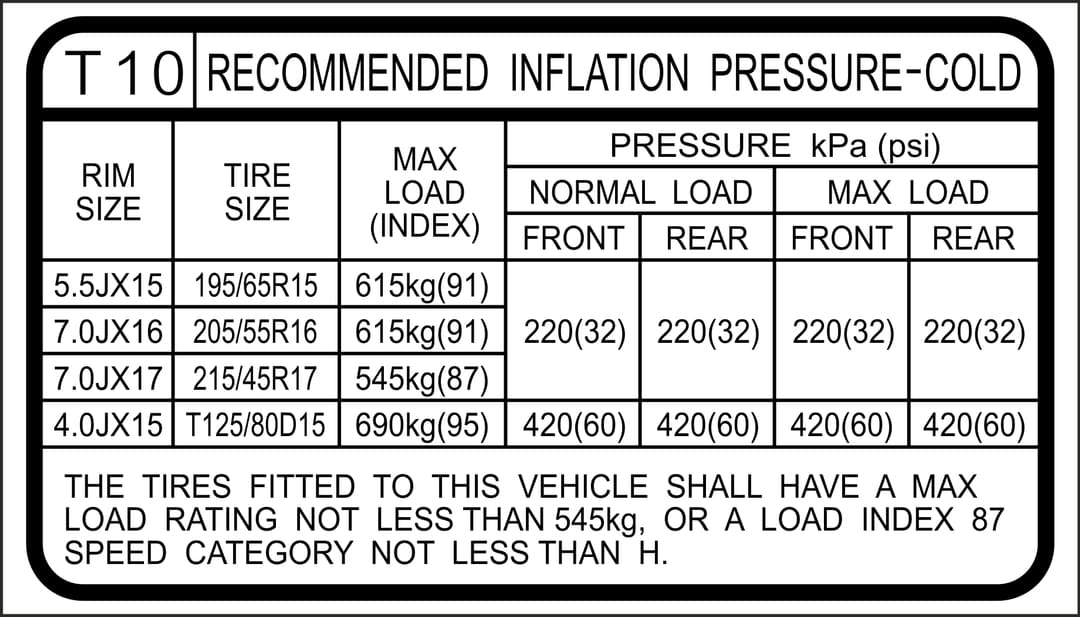
2 https://www.consumerreports.org/cro/tire-pressure-gauges/buying-guide/index.htm#:~:text=There%20are%20three%20types%20of,of%205%20to%2099%20psi., Accessed April 2022.
3 https://www.firestonecompleteautocare.com/blog/tires/should-i-inflate-tires-cold-weather/, Accessed April 2022.
4 https://rxmechanic.com/how-to-check-tire-pressure-without-gauge/, Accessed February 2022.
Tire pressure significantly affects driving parameters: comfort, car handling, economy and safety. It is important to maintain the pressure recommended by the manufacturer and check it regularly. Let's figure out how to do it right.
When driving on asphalt, incorrect tire pressure (both high and low) leads to a decrease in the contact patch with the road. An overinflated wheel clings to the surface only in the central part, which leads to its rapid wear.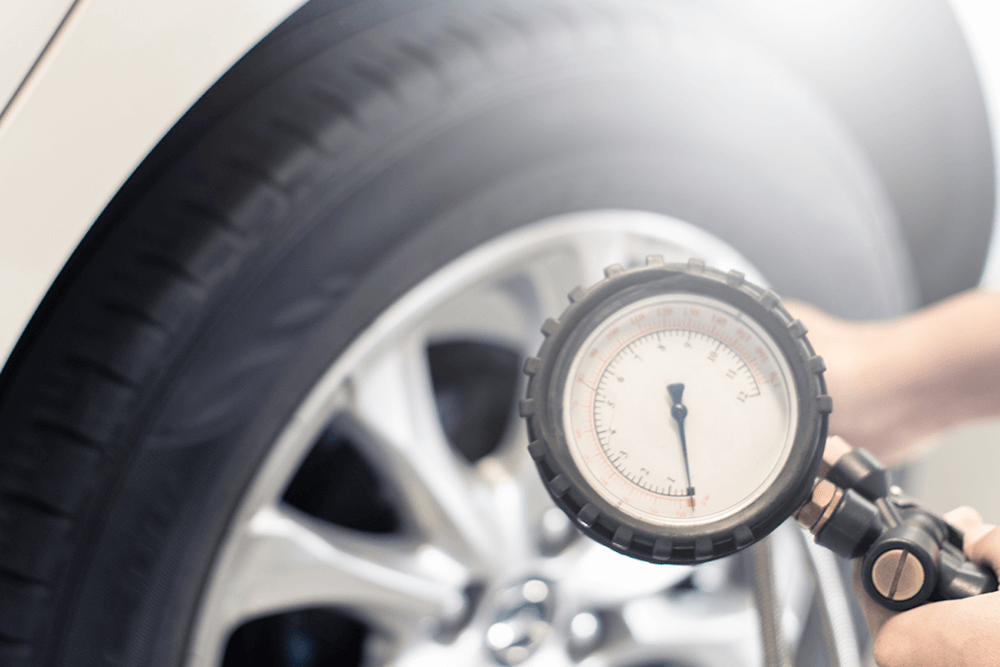 A poorly inflated tire, on the contrary, "sits" on the sidewalls, leaning on the shoulder areas of the tread and pushing the central part inward. Here's what it looks like:
A poorly inflated tire, on the contrary, "sits" on the sidewalls, leaning on the shoulder areas of the tread and pushing the central part inward. Here's what it looks like:
Both under-inflation and over-inflation in tires create many problems for the driver.
1. Increased wear of the central part of the tire tread.
2. Reduced ride comfort, hardness of potholes and road bumps.
3. Increased load on the car's suspension due to reduced tire damping effect.
4. Risk of tire damage and herniation due to shock loading (getting into a pit or pothole).
5. Reduced control stability due to reduced contact patch.
1. Increased wear of the tread sidewalls (shoulder areas).
2. Severe deformation of the rubber when driving over bumps, which increases the risk of tire damage.
3. An increase in tire temperature, which threatens to delamination of the carcass and can lead to tire explosion at high speed.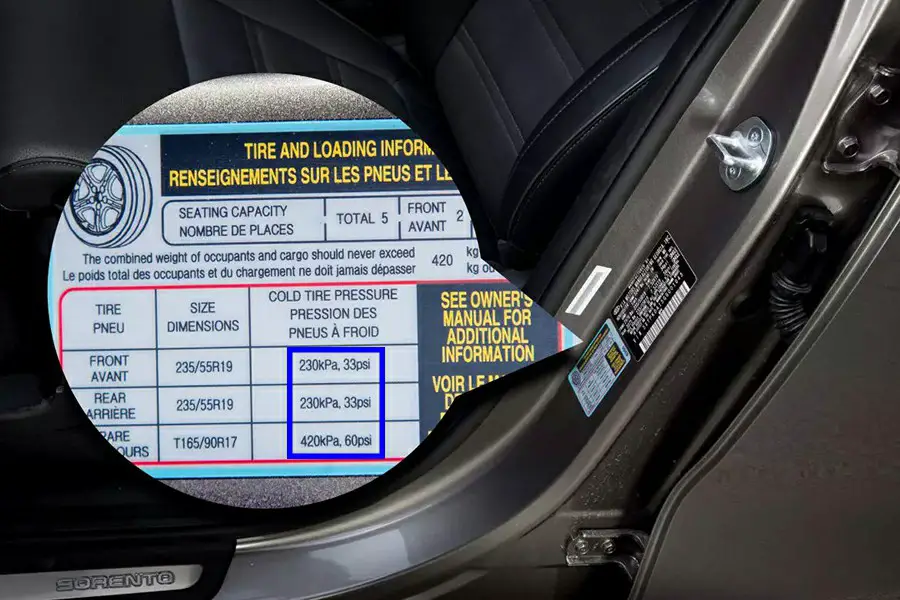
4. Increased risk of hydroplaning on wet roads.
5. Risk of tire breaking.
6. Increased fuel consumption.
Reduced pressure hits the driver's pocket hard: a pressure drop of 20% (which is not uncommon: it is enough, for example, to deflate the wheels to 1.8 atmospheres instead of the manufacturer's prescribed 2.2) reduces tire life by 25-30% and increases fuel consumption fuel by 3%.
There is no universal tire pressure: it depends on the size of the tires, the characteristics of the car (primarily weight) and road conditions. Therefore, it is important to follow the factory recommendations, maintaining exactly the tire pressure that the engineers expected when designing the car.
The recommended pressure for your machine can be found in the operating instructions and on the sticker in the door frame. If, depending on the configuration, tires of several dimensions were installed on the car, then the pressure recommended for them may differ - look in the table for your exact wheel size.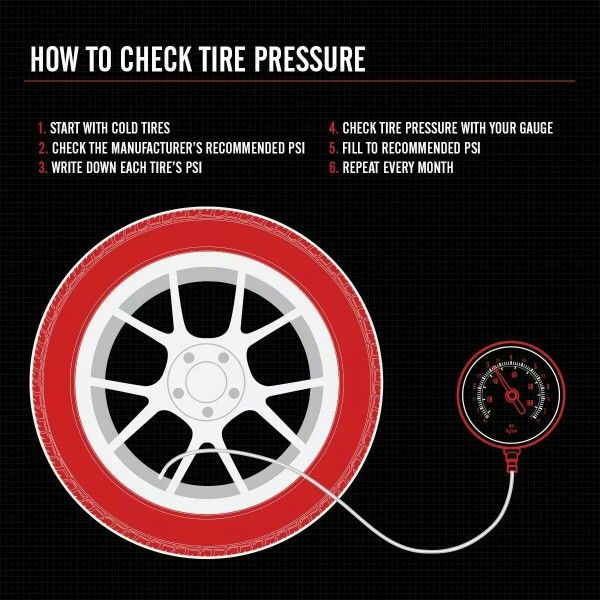 The manufacturer may prescribe an increase in tire pressure at the maximum load of the machine. For the spare tire (Spare tire), the required pressure is also indicated on a separate line - note that it is much higher than the standard one.
The manufacturer may prescribe an increase in tire pressure at the maximum load of the machine. For the spare tire (Spare tire), the required pressure is also indicated on a separate line - note that it is much higher than the standard one.
So, you have found the necessary pressure parameters, it remains to decipher them. In physics, pressure is measured in pascals, in real life - in anything: in bars, atmospheres, pounds-force, kilogram-force ... Drivers and tire workers usually use the term atmosphere, but such a unit is often absent on pressure gauges (pressure measuring devices) . Let's clear up this confusion.
Atmosphere is a non-systemic unit of measurement, approximately equal to atmospheric pressure on the surface of the Earth. Since it has become widely used, it was necessary to somehow equate it with correct physical units. For simplicity, one atmosphere is considered equal to one bar, one kilogram-force and one hundred kilopascals.
In addition to the technical atmosphere (at), there is also the physical atmosphere (atm), which is slightly larger. Again, for convenience, they are considered equal. But all these assumptions introduce an error, so if you need accurate tire pressure, measure it correctly - in pascals or bars. Moreover, manufacturers usually indicate the pressure in these quantities.
Imperial pounds-force (aka PSI, “psy”), popular in the USA, is more difficult to translate, here you can’t do without a calculator. In the table, we have collected together all pressure units with exact values, and also approximately brought them to each other to simplify calculations:
| Pressure units | |||||
| Pascal | Bar | Technical atmosphere | Physical atmosphere | PSI | |
| 1 Pa | 1 N/m² | 10-5 | 10. | 9.8692•10-6 | 145.04•10-6 |
| 1 bar | 105 | 1x106 dynes/cm² | 1.0197 | 0.98692 | 14.504 |
| 1 at | 98066.5 | 0.980665 | 1 kgf/cm² | 0.96784 | 14.223 |
| 1 bar | 101325 | 1.01325 | 1.033 | 1 bar | 14. |
| 1psi | 6894.76 | 68.948•10-3 | 70.307•10-3 | 68.046•10-3 | 1lbf/in² |
It is advisable to check tire pressure daily, before driving. But this is only possible with a very measured rhythm of life. In reality, checking at least once a month is already an excellent indicator for the average driver. But before traveling a long distance, checking the pressure and visual inspection of tires and rims should be done in any case.
It is necessary to measure the pressure in cold tires, that is, before driving. During driving, the tires heat up, which increases the pressure by about 10%. Therefore, never release supposedly excess air from hot tires: after cooling, the pressure will be below normal. If you had to inflate a hot tire during a trip, inflate it 10% more than the nominal value, and check the pressure again when the wheels have cooled down - no earlier than 3 hours after stopping.
If you had to inflate a hot tire during a trip, inflate it 10% more than the nominal value, and check the pressure again when the wheels have cooled down - no earlier than 3 hours after stopping.
Always check the pressure in all tires. Different tire pressures seriously affect handling and can cause the car to pull to the side. Do not forget about the "spare tire": it should always be inflated in case of an unexpected wheel change on the road.
For long-term driving at high speeds (more than 160 km/h), car manufacturers advise increasing tire pressure by 0.2-0.4 bar from the recommended value. This will slightly improve the handling of the car, although it will negatively affect comfort. But such advice is relevant for driving on high-speed autobahns, and not for everyday urban use, especially in Russia.
Before a long trip on a dirt road or a road with a muddy surface (mud, snow), it is reasonable, on the contrary, to reduce the pressure in the tires - this will improve the grip.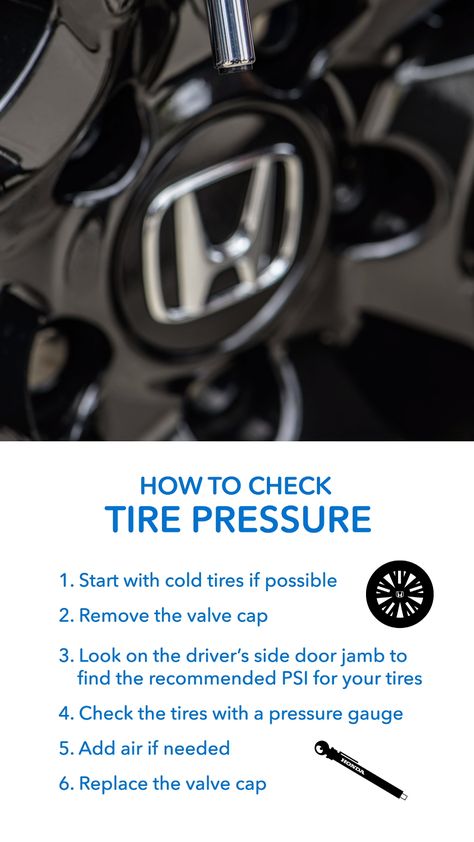 In summer, it is worth limiting yourself to reducing pressure by 5-10% of the nominal value, and in winter - by 10-15%.
In summer, it is worth limiting yourself to reducing pressure by 5-10% of the nominal value, and in winter - by 10-15%.
The pressure in low-profile tires (especially non-standard sizes) must be monitored especially carefully. Low profile tires have two features: a low sidewall (profile) height and a large rim diameter. If the tire has the correct air pressure, only the tread is in contact with the road. Low pressure causes the sidewall of the tire to bend, causing it to touch the roadway and wear out quickly, up to complete abrasion. And punching a low-profile tire in a pit at low pressure is much easier.
When inflating low profile tires, you need to focus on the pressure indicated for a full load of the machine and the maximum allowable pressure for a particular tire. It is indicated on the sidewall, next to the inscription max pressure, in one of the accepted units of measurement: kilopascals (KPA), bars (BAR) or pounds-force (PSI).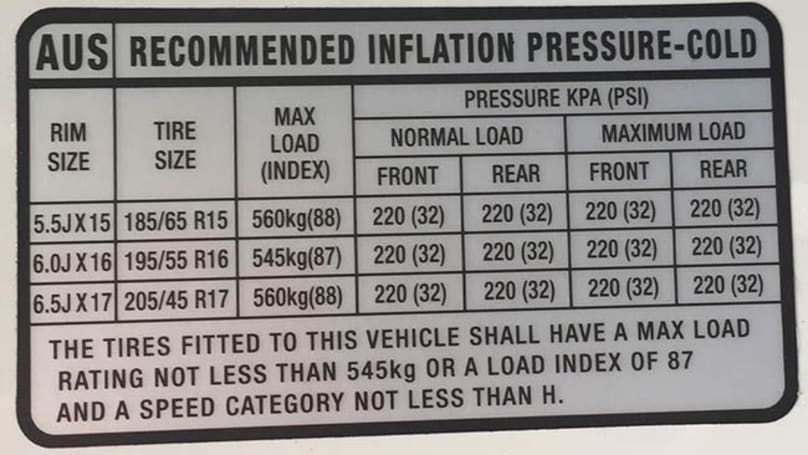
Modern cars equipped with sensors in tires and a TPMS (Tire pressure monitoring system) pressure monitoring system themselves monitor the pressure in each wheel and signal deviations, which is very convenient. If there is no such system in the car from the factory, you can install it yourself.
But the old manual measurement methods are still in use. Firstly, any modern car compressor is equipped with a pressure gauge: by inflating the wheel, you immediately control the pressure.
Secondly, there are compact hand-held pressure gauges: no need to unpack and connect the pump to check the pressure, and the measurement accuracy of such a pressure gauge is usually higher than that of a built-in compressor instrument. There are also modern digital pressure gauges on sale that allow you to switch pressure units on the fly and save readings in memory, which is very convenient.
Finally, if you want to entrust all maintenance of the car to professionals, you can use the services of tire fitting. In Hyperauto car services equipped with tire fitting areas, experienced mechanics will accurately measure and correct tire pressure, assess the condition of the tire tread and perform any other work with the wheels.
In Hyperauto car services equipped with tire fitting areas, experienced mechanics will accurately measure and correct tire pressure, assess the condition of the tire tread and perform any other work with the wheels.
Incredibly, such a simple parameter as tire pressure hides a lot of vehicle performance. For example, accelerated tire wear, increased fuel consumption, poor directional stability and additional stress on the suspension all depend on the amount of air in the wheel. Every motorist should know how to check tire pressure and how often to inspect the wheels. Firstly, these are the safety conditions of traffic rules. Secondly, the rule applies: careful attitude to technology - saves a personal budget.
A car is a technically complex device. The work of all nodes is accurately calculated by engineers. In order for the car to meet factory specifications, the automaker informs the owner that the operating parameters are being met. One of these parameters is "tire pressure". The requirements for the amount of pressure in the wheels are published in the operating instructions.
In order for the car to meet factory specifications, the automaker informs the owner that the operating parameters are being met. One of these parameters is "tire pressure". The requirements for the amount of pressure in the wheels are published in the operating instructions.
In addition, the information is duplicated by a sticker (nameplate) on the rack in the driver's doorway. The plate shows: tire size, rim dimensions and air pressure. Sometimes, the decal is placed in the passenger's doorway or on the inside of the gas cap. The unit of pressure can be specified in bar (Bar), kilopascals (kPa) or pounds (PSi).
According to the technical regulations, it is necessary to measure tire pressure once a month. If the winter period has come, then the check must be carried out 2 times a month. But remember that air is a gaseous substance. It expands when heated and contracts when cold. Therefore, do not check the pressure immediately after stopping the car. Tires need to cool down. The same with low cold, the device is guaranteed to show a lower pressure, which will return to normal after driving, when the air in the tire warms up.
Therefore, do not check the pressure immediately after stopping the car. Tires need to cool down. The same with low cold, the device is guaranteed to show a lower pressure, which will return to normal after driving, when the air in the tire warms up.
Many car owners instinctively kick the wheel with their foot, checking the cylinder for the presence of air. We inherited this manner from our ancestors, kicked by grandfathers and fathers. But this method works from the part when the tire is completely empty and it is no longer possible to drive. Correctly measure the presence of pressure in tires, it is possible only with the help of a pressure gauge. Buying a device is not difficult, as it is sold in any auto shop. Here is a step-by-step guide on how to measure tire pressure yourself:
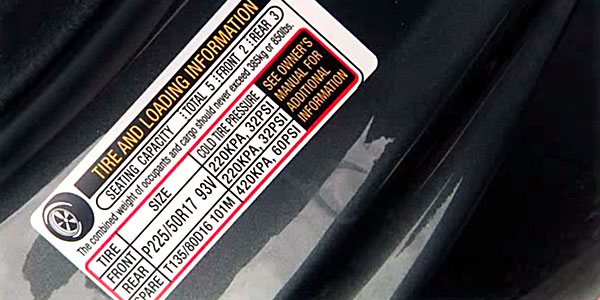 After pumping, it is necessary to read the pressure parameters again (the presence of a pressure gauge on the pump does not ensure the accuracy of measurements).
After pumping, it is necessary to read the pressure parameters again (the presence of a pressure gauge on the pump does not ensure the accuracy of measurements).
Carefully study the scale of the measuring units of your pressure gauge, which can be: Bar, kPa, kg/cm2 and PSi (pounds) the measures are different. For example, 2.2 (Bar) would equal 220 (kPa) or 31.908 (psi).
"You can't spoil porridge with oil" - this commandment does not apply to overinflated wheels. Excessive pressure will give discomfort in driving. Along with this, the center of the tread begins to wear out rapidly. The exception to the rule is if you add air on an overloaded car. But, the unloading field, bleed the excess from the cylinders.